What climate scientists talk about now
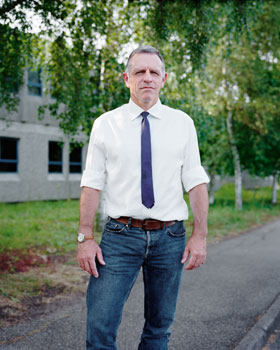
Simply sign up to the Life & Arts myFT Digest -- delivered directly to your inbox.
David Vaughan was sitting in his office in Cambridge when he first saw the grainy black-and-white picture of something he had never thought possible. It was a satellite image of a huge ice shelf on the edge of the South Pole in an area he had been studying with his colleagues at the British Antarctic Survey research centre. At least, it was supposed to be.
This was 1995 and Vaughan, a glaciologist with the careful manner of the solicitor he once thought of becoming, looked at the spot where the shelf had been and thought, “The damned thing’s not where it’s supposed to be.”
“It was like looking at a map of Britain and seeing half of Cornwall had disappeared,” he told me recently.
This was baffling, and disconcerting, because ice shelves act like giant doorstops that block the world’s last two ice sheets, in Antarctica and Greenland, from oozing faster towards the ocean. Those sheets are a frozen menace to civilisation – they would push up global sea levels by more than 60m if they ever slid into the sea. So a plane was dispatched to check on what Vaughan’s picture really showed. Its crew returned with startling news: the ice shelf had gone.
“They came back with these fantastic photographs of a whole area of football pitch-sized icebergs that were just floating off,” said Vaughan. “That was the first time we’d ever seen anything like that virtually collapse overnight.”
It was not the last. Today, seven of the 12 ice shelves that once fringed that part of the Antarctic have either collapsed or shrunk, along with 81 per cent of its 300 glaciers. And while temperatures have not risen across the entire Antarctic continent, the area that Vaughan was studying has warmed by about 3C in the past 50 years, much faster than global temperatures have risen.
Vaughan never thought about the natural world in the same way again. Today, he is a prominent author of a mammoth international report that will start to be published next month on one of the most fraught public policy issues of our age: climate change. This will be the first assessment report in six years from the Intergovernmental Panel on Climate Change, the UN body created in 1988 to give governments an expert technical appraisal of how the climate is changing and why. There have only been four such reports before – in 1990, 1995, 2001 and 2007. Many of the scientists writing them have had experiences like David Vaughan’s that have convinced them the climate is changing profoundly, a conclusion each of their reports has confirmed with growing confidence.
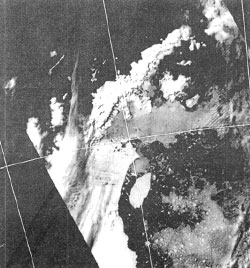
But this report will be unlike any other. For one thing, it is the first since the IPCC was plunged into two controversies four years ago, one over claims that hacked scientists’ emails showed some IPCC authors had tried to hide data undermining their findings on global warming; another about an error in the 2007 report suggesting Himalayan glaciers could melt by 2035. It is also the first since it became so clear that, despite a relentless rise in carbon dioxide emissions, global temperatures have not risen nearly as fast over the past 15 years as they did in previous decades. And it will be the last before world leaders meet in Paris in 2015 to finalise a legally binding agreement to tackle climate change, which will be guided by the IPCC’s latest findings.
This means the report will be one of the most carefully analysed documents on climate change this decade, probed and picked apart by the thousands of people around the world for whom the subject has become a driving passion. Yet interviews with some of the scientists who have drafted the new assessment reveal the IPCC is still a curiously misunderstood body, made up of people with widely differing views about how the climate is changing and even about the value of the IPCC itself.
…
There is nothing else quite like the IPCC. No other branch of science appraises everything of note published in its field for several years on end and puts it together into one enormous study. Each assessment report is so big it is published in stages over the course of a year. The last one weighed in at 20lbs on my bathroom scales and ran to more than 3,000 pages. The one that will start to be published next month is set to be even bigger, in line with an explosive growth of climate science research. The first IPCC assessment in 1990 had 97 main authors. This one has 840.
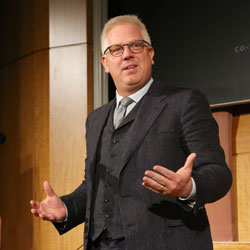
In the wake of the “Climategate” and “Glaciergate” controversies four years ago, a raft of inquiries eventually found no evidence of serious wrongdoing, let alone anything to raise doubts about the IPCC’s conclusions. But the scientists remain the target of a vigorous group of critics sceptical about their work. They have been branded “criminals” (Britain’s Lord Monckton) guilty of “massive international scientific fraud” (US congressman James Sensenbrenner) who should commit “hara-kiri” (US pundit Glenn Beck) for duping the world with “snake oil” (former Alaskan governor Sarah Palin).
This has had an impact on the people doing this latest IPCC assessment, according to several of the scientists interviewed for this article. “I see it in the tension in the author team,” as they check, recheck, then check again all their work, said David Vaughan. “I think there is a point at which that kind of stress can become difficult to manage,” he added, explaining it has made IPCC work “a very cumbersome, slow process”.
These furores have also added confusion to what is still a widely misunderstood scientific endeavour. For one thing, the IPCC does not actually exist, at least not in the way many imagine it does, with a staff of comfortably remunerated researchers beavering away to produce its reports. Instead, it relies on hundreds of mostly government-nominated scientists working for free for large parts of the several years it takes to produce the assessments for the IPCC’s 195 member countries, all of which are ultimately supposed to approve the report summaries.
The report authors are divided into three working groups: one on the physical science; one on how to adapt to climate change; and one on how to curb it. The most closely watched is Working Group I, on the physical science of climate change, whose report is coming out next month.
The largest share of authors comes from the US and then the UK, which has long been disproportionately represented in the IPCC. For more than half the panel’s life there has been a British scientist either chairing it or leading Working Group I, thanks to a drive to fund climate research dating back to former prime minister Margaret Thatcher.
Perhaps the least understood aspect of the IPCC, however, is how it is run. Its work is supported by a secretariat based in the home of international secretariats, Geneva. But unlike the nearby World Trade Organization, which has 629 regular staff, or the World Health Organization up the road, which has more than 1,800 in its headquarters, the IPCC has just 12 full-time staff in a strip of offices on the eighth floor of the World Meteorological Organization.
The day I visited in late June, I met Renate Christ, the Austrian scientist who has headed the IPCC secretariat since 2004, and asked what her annual budget was this year. “It goes between $7m and $10m,” she said, peering at her computer to check exactly what it was for 2013. It turns out that the amount of money the world has come up with to fund the headquarters of the body producing the last word on what Barack Obama recently called “the global threat of our time” is $9.3m this year, about the same as Cumbria spent fixing potholes last year.
If you sat down and read all the IPCC’s reports together, which few ordinary mortals ever do, you would read a story of growing scientific conviction that the Earth is warming and that it is probably because of the greenhouse gases humans have produced since they took to burning fossil fuels such as coal and gas in ever more prodigious quantities from the industrial revolution onwards.
The last assessment, in 2007, said average global surface temperatures had gone up 0.76C since 1850, had accelerated in recent decades, and were rising nearly twice as fast in the Arctic. The oceans were warming; glaciers were suffering “widespread mass loss”; and sea levels were rising. Global warming was therefore “unequivocal”, the report said, and most of the temperature rises seen since the mid-20th century were “very likely” due to the increase in human-made greenhouse gases, the most important of which is carbon dioxide.
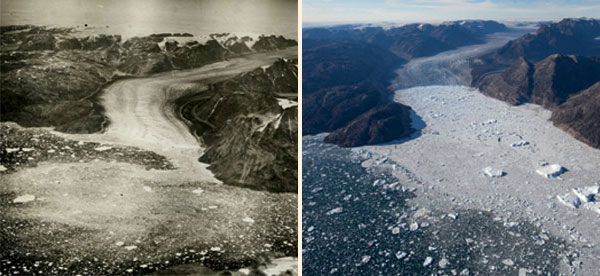
A leaked draft of the new fifth assessment done in October last year said this conclusion had only been strengthened by newer data and that heatwaves were also more likely in many parts of the world, as well as heavy rains.
But there is one thing the final version must include when it is published next month, according to Sir Bob Watson, the British scientist and climate action advocate who chaired the IPCC for nearly six years up to 2002. “I think the current Working Group I report must address in detail the slowing down in the last 10 years,” he said, adding that although the past three decades were probably the warmest in 1,000 years, “there is also no question that it would appear that the rate of change in the last decade or so is definitely slower than the previous two decades.”
“The IPCC must address this because the climate deniers are linking on to this as a reason to say we’ve got all the science wrong. So I think one of the very most important issues is indeed for them to address this issue absolutely head on.”
The extent of this slowdown depends on how one measures it. Each of the past three decades has been warmer than the previous one and the long-term trend since the 1850s clearly shows a steady temperature rise. However, the average rate of warming was 0.17C per decade between 1970 and 1998 and just 0.04C per decade from 1998 to 2012, according to one of the main global temperature data sets.
Slowing temperature rises have happened before, notably between the 1940s and 1970s. But the recent slowdown has come even though the amount of carbon dioxide in the atmosphere reached 400 parts per million earlier this year, the highest level in millions of years.
This issue is so new that it was barely considered when the IPCC first met in 2009 to decide what would be in its next assessment and there is still no agreed name for it. Many scientists have started to call it the “hiatus” or “pause” and though it will be addressed in the final report, there is still no consensus on what has caused it. Some think it is happening because the oceans are absorbing more heat than once thought, especially at very great depths. Others think aerosols, tiny airborne particles from volcanic eruptions or industrial pollution that reflect sunlight away from the Earth could be having more of a cooling impact.
The most contentious theory – and the one global warming sceptics are most interested in – is that the climate is not as sensitive to carbon dioxide emissions as previously thought. Even if this proves correct, all the climate models used by the IPCC for its latest assessment show that if greenhouse gas emissions continue at current rates, the world will still exceed this century the 2C warming from pre-industrial levels that some scientists believe could prompt dangerous forms of climate change.
But in a sign of what a potent issue the slowdown is becoming, politicians in the US and the UK are already asking if it means they can ease back on contentious measures to curb global warming such as offshore wind farms or carbon pricing.
…
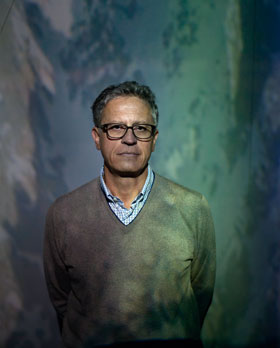
The man at the centre of the IPCC’s new assessment is a gruff Swiss environmental physicist named Thomas Stocker, co-chair of the Working Group I report. After a lifetime spent in the trenches of climate science he is a man of firm opinions. He likes the cerebral American jazz pianist, Keith Jarrett, and spotting orchids. He dislikes a lot of things, including people addicted to smartphones (his own ancient device does almost nothing but take calls), the falling rate of scientific literacy in western society, and poorly run meetings, which he says are “just terrible” and even “irresponsible”. When I saw him in the airy office he has occupied at the University of Bern for the past 20 years, the walls were plastered with reproductions of some of his team’s best-known scientific publications, including a chart showing that concentrations of carbon dioxide in the past 200 years rose to levels more than 30 per cent higher than at any time in the past 800,000 years.
“That’s the most impressive hockey stick,” he said proudly, a reference to the famously contentious graph first published in the late 1990s by the US scientist, Michael Mann, and colleagues. This showed temperatures stayed roughly flat for nearly 1,000 years, like the handle on a horizontal hockey stick, before rising sharply in the 20th century, like the blade, after fossil-fuel emissions began to soar. Climate sceptics have spent years attacking it and Mann because it was such a simple picture of the link between global warming and rising carbon dioxide emissions.
Stocker says, however, that it was his team’s research that was used in the Al Gore film, An Inconvenient Truth, for the part where Gore uses a forklift to illustrate the relative level of today’s emissions compared with those of the past.
He is characteristically brusque about the idea that the recent slowdown in warming suggests politicians can ease up on measures to curb global warming because scientists were mistaken about climate sensitivity. Such questioning is based on “complete disinformation”, he said, pointing out that even the IPCC’s best estimates are always given together with a range of upper and lower projected temperatures. In any case, he said, 15 years of slower warming is simply too short a timeframe on which to base a judgment. “If we found that indeed for 30 years the temperature didn’t go up and CO2 went up with the rate that we observe today, then of course that would pose serious questions. It’s absolutely clear,” he said.
But is it possible that temperatures are not responding to carbon emissions as vigorously as scientists once thought or do we know if the oceans are absorbing more heat? “If we knew one, we could actually make a statement about the other,” Stocker said. “It’s really coupled. We’re not in a position to say either/or.”
It is a similar picture for aerosols. “I think generally there is a large uncertainty,” he said, adding that the current rate at which fossil fuels are being burnt means a considerable amount of warming is nonetheless certain.
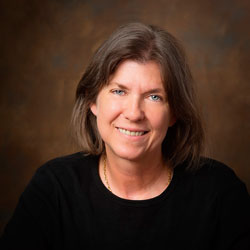
Stocker remains resolutely confident about the robustness of the IPCC’s projections overall. “There is no other science and there’s no other activity of humans that looks into the future that has done so well as the IPCC,” he said. “Ask how well do the GDP projections fare for the next month. Ask how well do the projections of crop yields for the next year. Ask how well projections of DAX [the blue-chip German stock index] and all these other indices fare.”
Stocker’s view is shared by many of the thousands of scientists who have contributed to the IPCC reports over the past 25 years but not all. Dr Judith Curry, chair of the School of Earth and Atmospheric Sciences at the Georgia Institute of Technology, is one of several prominent US contrarians who have taken part in past reports but says she would not do so again. The process focuses too narrowly on human impact on the climate, she says, and requires a consensus about its conclusions that can lead to a tribal, group-thinking about the science. “This focus has essentially neglected natural climate variability, and has also neglected to assess potential benefits from a warmer climate,” she told the FT.
“Defending the consensus creates temptations to make illegitimate attacks on scientists whose views do not align with the consensus and to dismiss any disagreement as politically motivated ‘denialism’.”
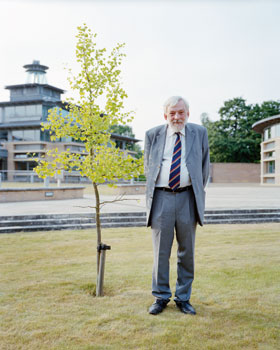
One doesn’t need to look far to find IPCC scientists who are – for different reasons – even less flattering about some of its work, including one helping to shape the latest assessment. Peter Wadhams, a leading expert on Arctic sea ice at Cambridge university, is a review editor on the new Working Group I report. He was pleased to be involved with this one because he was so upset about certain aspects of the last IPCC assessment in 2007.
“They made a couple of real clangers there,” he said gloomily, staring around his cluttered lair in the university’s Department of Applied Mathematics and Theoretical Physics. One was a contentious decision not to include a best estimate for future sea level rises because it was thought the potential impact of ice sheets was still too poorly understood. Wadhams, along with other critics, believes this led to a serious underestimate of how high sea levels will rise. “They just chickened out,” he fumes. “I mean, in a really systematically cowardly way. And it shows how naive these scientists are or how terrified of sticking their neck out.”
Thomas Stocker, who had a hand in drafting that earlier report, said uncertainties about how the ice sheets were changing made it impossible to include them in the way Wadhams thought they should have been. “Our purpose in AR4 [the earlier assessment] was not to report the highest numbers which would make headlines, but it was to report the numbers that we can defend,” he said.
But Wadhams is even angrier about another line in that last IPCC report suggesting it could take until the latter part of this century before Arctic summer sea ice disappears almost entirely. The sea ice that covers much of the North Pole always melts a little in summer and then refreezes as winter sets in. Last summer, however, it shrank to its lowest point in more than 30 years, a much more dramatic decline than predicted. Wadhams thinks it more likely that its summer sea ice will vanish as soon as 2015.
“It could even be this year or next year but not later than 2015 there won’t be any ice in the Arctic in the summer,” he said, pulling out a battered laptop to show a diagram explaining his calculations, which he calls “the Arctic death spiral”.
This prediction is frequently described as too extreme by other climate scientists writing for the IPCC. But Wadhams says this only underlines the “very conservative” views of the body, which has far too many government scientists who are “in the business of really generating complacency”. He even has doubts about how much value there is in today’s IPCC assessment reports, which he thinks have become too big to be widely useful. “I mean, those thick ones are kind of monuments to man’s arrogance or man’s beavering away. It’s to say, ‘Hey, look, aren’t we wonderful, there’s more of us doing climate research than ever before in the world, we’re all doing more and this is what we’ve done and aren’t we great.’
“But the trouble is a reader who’s not a scientist is going to say, ‘Well, so what?’, there’s 50lbs of book, what does it tell me?”
…
Perhaps the greatest danger to the IPCC, however, is how cumbersome it has become to produce its assessments. The length of time between reports has always made some of its findings slightly outdated, but the process is also increasingly taxing for the volunteer scientists involved. Professor Jonathan Gregory, a leading expert on sea levels and an IPCC report veteran, had been working nonstop the day I saw him at Reading University. “It’s pretty near, I think, the limit of what one can do without it being a job,” he said. “It’s taken a colossal amount of my time this time.”
“I’ve been working on the IPCC Report in the last two months about 35 hours a week,” Gregory added, “but then I have to work another 25 hours to get all the other stuff done, or at least keeping it ticking over. So it is pretty difficult, really.”
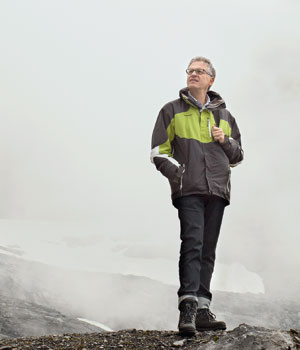
Across the corridor, another IPCC author, Professor Rowan Sutton, was even blunter. “This has been a phenomenally protracted process,” he said. “I’m not sure I would do it again. I mean I don’t think I’ve got the time to do it again really. I do also think that the process needs to change to make it more manageable.”
This change could happen. Earlier this year, Renate Christ from the IPCC secretariat sent a letter to all the governments that commission the panel’s reports asking them to consider “the future of the IPCC” in time for a meeting to be held in October in the Georgian city of Batumi. Similar reviews have been done in the past but one question up for debate this time, according to an accompanying background document that was sent out, is “should the IPCC continue to give priority to comprehensive assessment reports”, with smaller special reports. Another was whether it should do more “focused thematic reports that would jointly constitute an assessment report”.
This would be quite a change for a body that has played such a profound role in shaping the way we think about climate change. And it would make the latest IPCC assessment report even more distinct from its predecessors because, depending on what governments end up deciding, there is a chance that this one could be the last of its kind.
——————————————-
Pilita Clark is the FT’s environment correspondent. To comment on this article, please email magazineletters@ft.com
Comments